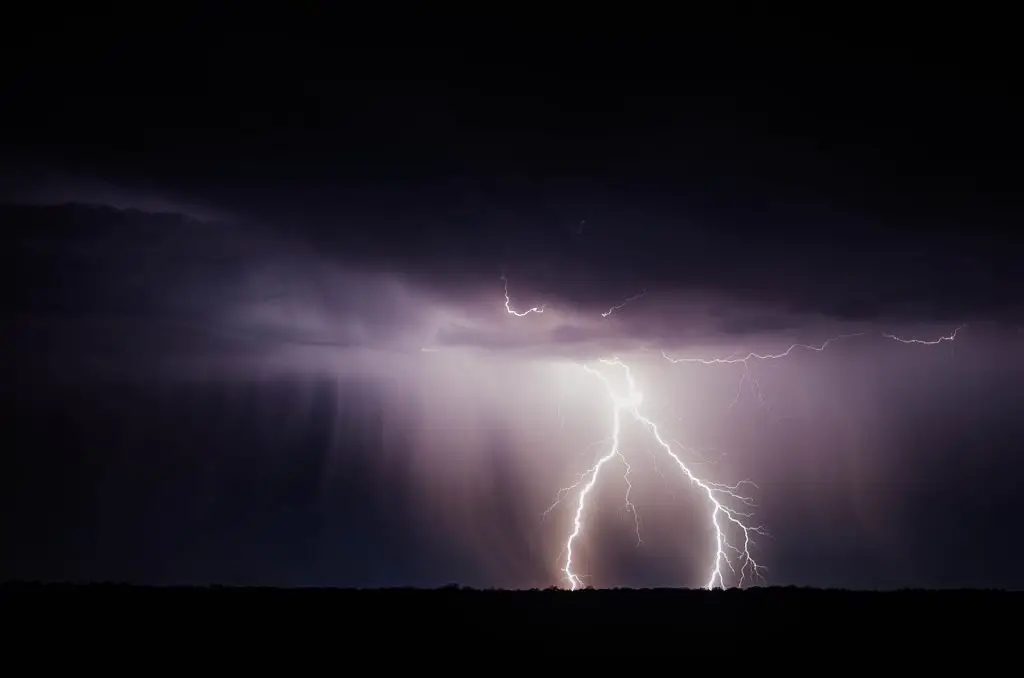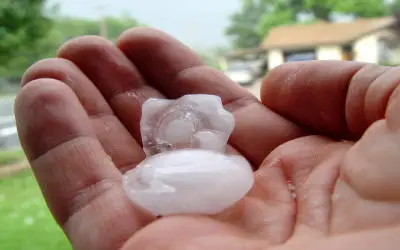
Is My Roof Hail Damaged?
Know the signs of hail damage and when you should call a roof contractor to help.
Consumer advice by Atlanta Roofing Specialists.

Hail Damaged Roofs
They don’t look like much but these little guys can do a lot of damage to your roof!
Generally, hail must be 1 ¼ inches in diameter (Half-Dollar size) before it causes damage to heavy composite shingles or wood shake shingles. Lightweight composite shingles may show damage after being struck by 1-inch diameter (Quarter size) hail. Only deteriorated composite shingles will show hail damage due to hail less than 1 inch in diameter, and the hail generally must be more than ¾ inch in diameter (Dime size).
If your area has received hail large enough to possibly cause damage to your roof, you may want to examine other objects at ground level before calling your insurance company or pulling out your ladder. Hail strong enough to damage a roof will also cause damage to nearby cars, wood fences, shutters and/or exterior siding. Also a significant amount of shingle granules appearing at the end of downspouts may indicate potential damage; however, granule loss, in and of itself, does not prove hail damage.
An inspection of the roof can reveal other causes that could have led to damage. There are certain types of damage to consider before assuming you have hail damage:
Embrittlement/Hardening
Each composite shingle has four layers: a mat composed of glass fibers or organic materials; asphalt; a filler made of sand and limestone; and granules made of crushed stone with a ceramic coating. When the shingle is exposed to the weather, the asphalt will deteriorate and shrink.
The shingle will harden, become brittle and may demonstrate one or more of the following phenomena:
Cupped or Curled Edges
As the outer edges of the shingle shrink at a faster rate than the interior of the shingle, the edges tend to curl up or down.
Craze Cracks
Hairline cracks that appear in a random pattern throughout the shingle.
Horizontal, Vertical or Diagonal Cracks (also known as Splitting)
Caused by asphalt shrinking at opposite ends of the shingle. As these ends shrink, the middle of the shingle pulls apart, leaving a crack (split).
Splices
Occasionally, a shingle is created at the place where one end of a roll of mat ends and the new roll begins. The splicing together of these rolls leaves a double thickness of mat that does not allow the remaining layers of the shingle to be properly formed.
Blisters
Heat causes the asphalt to release gases, which sometimes are trapped by the surrounding layers. The resulting blisters can then “pop,” and leave pockmarks in the shingle. A blister does not have the characteristic “bruise” that can be felt in a shingle that was struck by a hailstone
Discolored Streaks or Patches
Lichens or algae can grow on shingles in most weather conditions. The colors usually seen are green, brown, orange, gray, or a mixture of those colors.
Diagonal Pattern of Deterioration
If you see a diagonal pattern of shingle deterioration or color gradation appearing across three tabs of shingles, it generally is a result of a manufacturer’s defect in the shingle. The diagonal pattern shows up as a result of the pattern that was used by the roofer when installing that batch of shingles on your roof.
Rounded or Horseshoe Shaped Areas
These areas, where the granules are compressed into the coating asphalt, and the granules themselves appear to have been crushed to a powder, are caused by hammer damage. Such damage usually occurs near ridges.
Hail damage will result in a random pattern of strike marks in various sizes. If you can see a pattern to the damage, it was not caused by a random phenomenon like hail. In addition, hailstones will leave a “bruise” in the mat, which your fingers can usually detect in and around the crater.
If you see hail damage or need us to inspect your roof for you (at no charge) call us at (770) 419-2222
